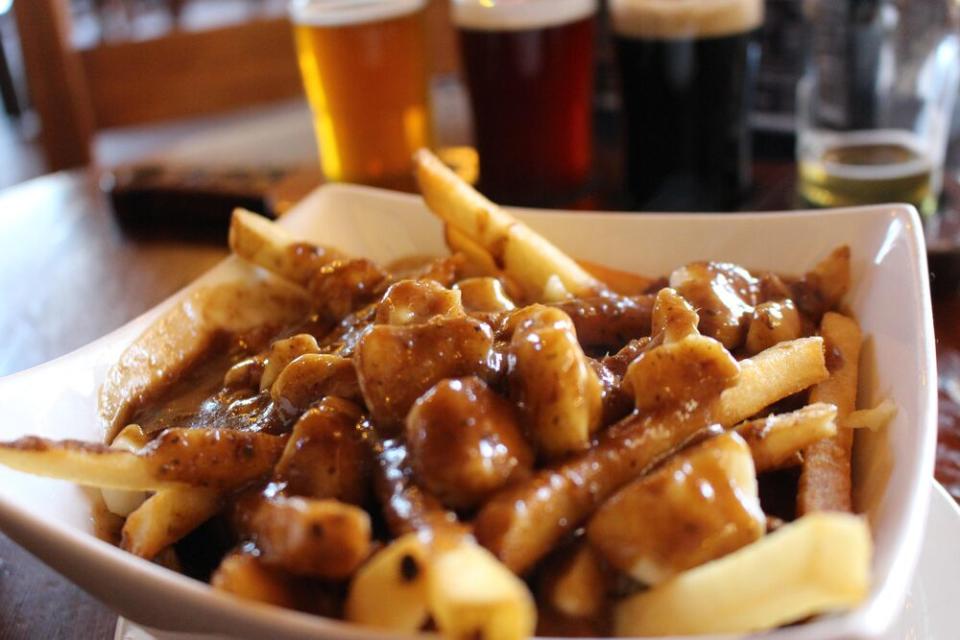What Is Poutine and Why Is It So Delicious?!
You know what we don’t talk about enough? Poutine.
If you’ve ever wondered how the Canadian comfort food came to be (or what makes it so insanely delicious), you’ve come to the right place:
What Is Poutine?

Poutine is an absolutely divine dish composed of fries topped with cheese curds and hot gravy.
Though it’s not officially Canada’s national food (this is actually the subject of some contention), it might as well be. You can’t really indulge in the ultra-comforting dish without thinking about the Great White North—that’s how closely associated it is with the country.
At its most basic, poutine is a carby, cheesy, brown gravy-loaded masterpiece. There are no rules when it comes to poutine, though. It can be topped with veggies, bacon, chili, pulled pork, and, really, anything your poutine-loving heart desires.
Wait, What’s a Cheese Curd?
Cheese curds, sometimes called squeaky cheese, are a byproduct of coagulating milk, which is what happens when you add an acid, like lemon juice or vinegar, to dairy. The increase in acidity causes the milk proteins to tangle together into solid masses.
Put simply: A cheese curd is a really, really tasty clump of curdled milk.
Related: What the Heck Are Curds and Whey?
What Does Poutine Taste Like?

Heaven. Next question, please.
How Do You Pronounce “Poutine?”

Poutine is pronounced “poo-teen” (LOL).
You can listen to the proper pronunciation at Merriam-Webster.com if you’re still unsure.
Poutine History
“Poutine” is a Quebecois slang word that means “mess.”
A few Canadian restaurants claim to have concocted the dish, but one origin story remains the most widely accepted:
Fernand Lachance, restaurateur and owner of Le Lutin qui rit in Warwick, Quebec, created the dish in 1957 at the request of a regular customer named Eddy Lainesse.
“Warwick is located near Victoriaville midway between Montreal and Quebec City in a region dotted with dairy farms and famous for its fresh cheese curds which Mr. Lachance displayed in small cardboard boxes on the café’s counter,” according to a 1997 article that appeared in The Globe and Mail. “Craving something rich and tasty, Mr. Lainesse suddenly had a brainwave. Why not put the cheese and fries together?”
As the legend goes, Lachance exclaimed, “Ca va faire une maudite poutine!” (Roughly translated: “It will make a damn mess!”).
Nevertheless, he quickly added the “damn mess” to his menu. By 1962, he was topping the fry/cheese curd mixture with gravy to keep it warm.
Get the recipe: Crab Gravy and French Fries Are a Breakfast Poutine Dream
How to Make Poutine

You can make assembling poutine as easy or as complicated as you want.
It’s best to use thick-cut fries that can stand up to heavy toppings. This means you should avoid the McDonald’s-esque matchstick-shaped ones that’ll quickly become droopy and fall apart.
As far as gravy goes, most people use beef. For what it’s worth, though, Lachance (who died in 2004) told The Globe and Mail that his legendary dish wasn’t always served with beef gravy. It originally came with his wife’s famous sauce, “a mixture of brown sugar, ketchup and Worcestershire sauce, served on the side so the fries wouldn’t get soggy.”
If you’re feeling fancy, use fresh ingredients and make your fries and gravy from scratch.
But, if you’re in a rush or—let’s be real, hungover—there’s absolutely nothing wrong with topping frozen French fries with jarred gravy and cheap curds.
Any poutine is good poutine, after all.
Get the recipe: Poutine

